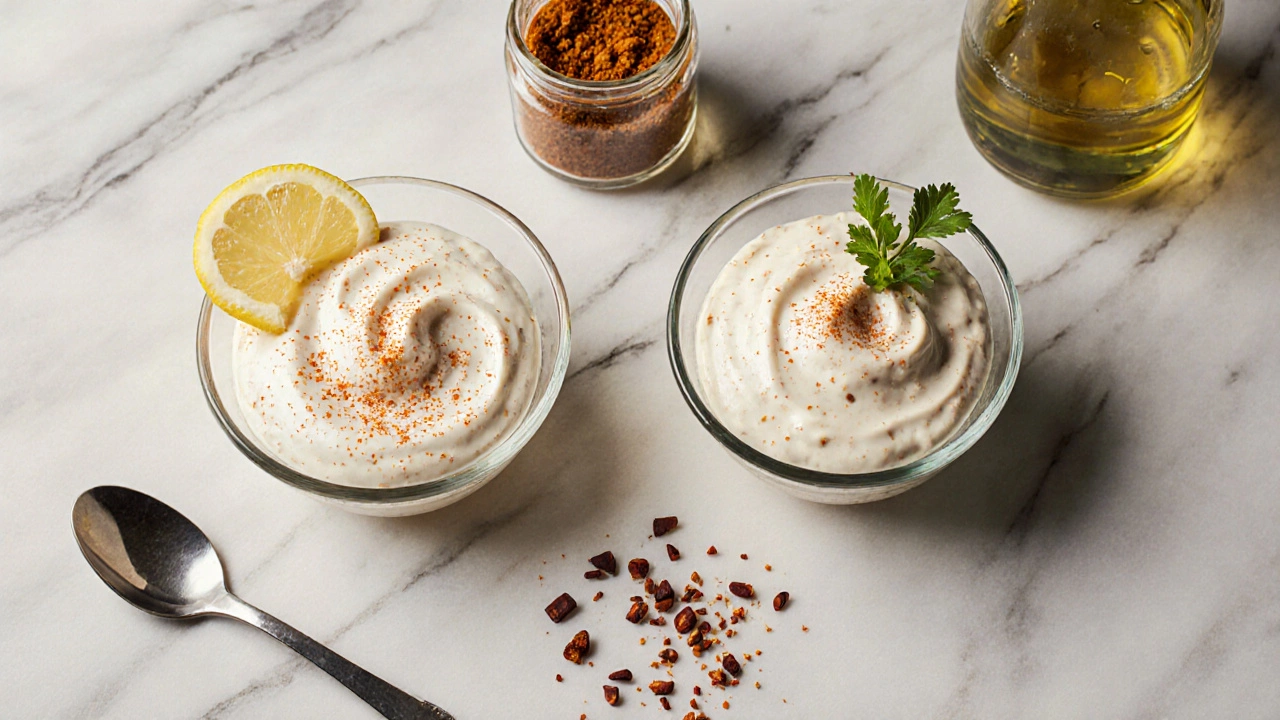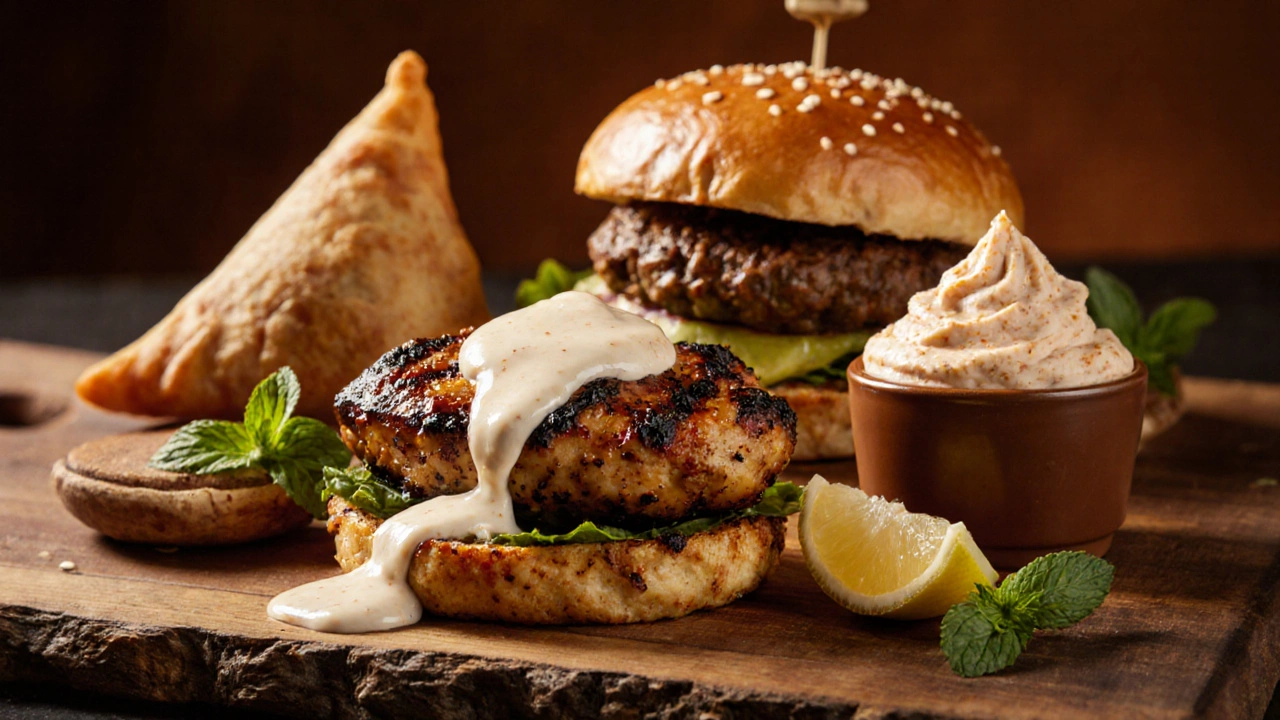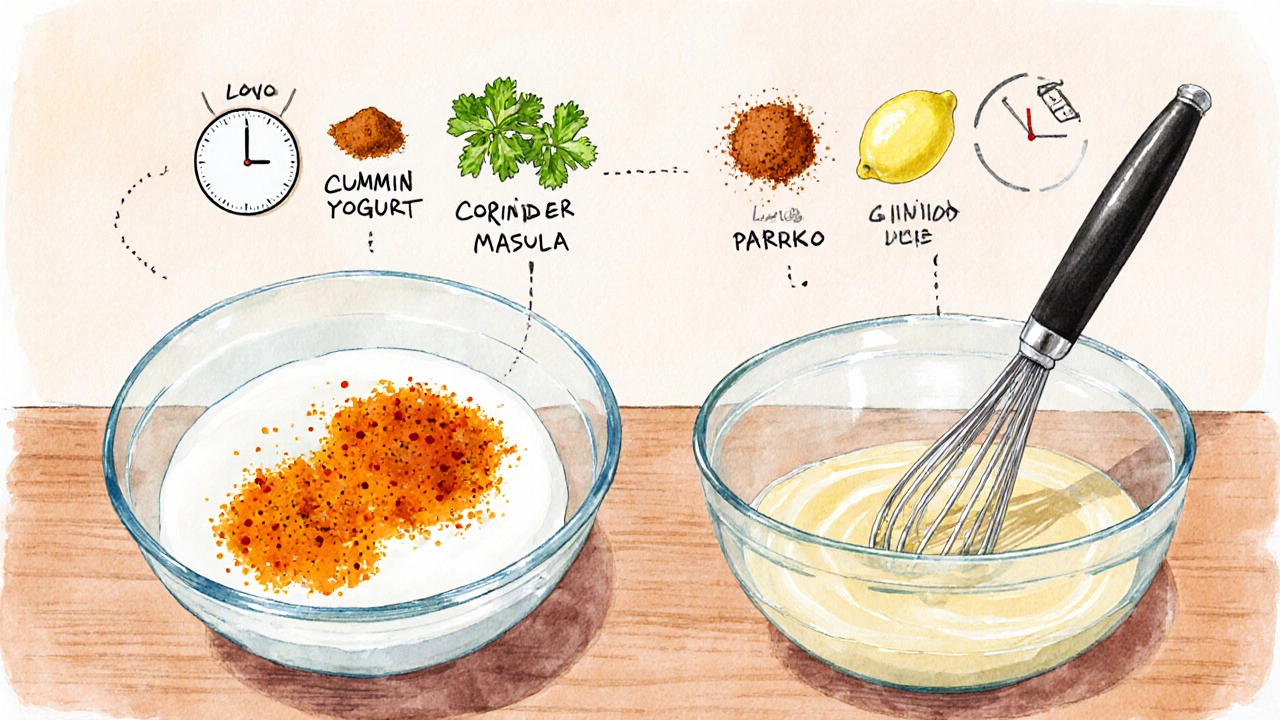Tandoori Mayonnaise vs Tandoori Spread: Key Differences Explained
 Oct, 11 2025
Oct, 11 2025
Tandoori Condiment Selector
Choose Your Condiment
Select what you're preparing and your main requirement to get a recommendation
Ever opened a sandwich and wondered why the sauce tastes so different when it’s called tandoori mayonnaise instead of tandoori spread? The two names sound alike, but the ingredients, texture, and ideal uses vary enough to affect flavor, shelf life, and how they fit into a meal. Below you’ll get a clear, no‑fluff breakdown so you can pick the right one for your next cook‑up.
Quick Takeaways
- Base: Tandoori mayonnaise starts with regular mayo; tandoori spread usually swaps mayo for yogurt or cream cheese.
- Flavor intensity: Spread leans milder and creamier, while mayo packs a richer, fattier punch.
- Texture: Mayonnaise stays silky; spread is thicker, often spoon‑able.
- Best uses: Mayo shines on grilled meats and burgers; spread works great as a dip, sandwich layer, or salad topper.
- Storage: Mayonnaise lasts longer at room temperature (until opened); spread needs refrigeration.
What is Tandoori Mayonnaise?
Tandoori mayonnaise is a condiment that blends classic mayonnaise with tandoori spices. The base is the standard oil‑and‑egg emulsion that gives mayo its creamy, almost buttery mouthfeel. To turn it into a tandoori version, cooks whisk in a teaspoon or two of tandoori masala, a blend usually containing cumin, coriander, paprika, garlic powder, and a hint of cayenne. Some recipes add a splash of lemon juice or a dash of honey to balance the heat.
What is Tandoori Spread?
Tandoori spread is a broader category. It typically starts with a dairy base such as thick yogurt or softened cream cheese. The same tandoori masala mix is folded in, but the resulting sauce is denser and less oily than mayo. Some home cooks also blend in fresh cilantro, mint, or a few drops of garlic paste for extra depth.

Ingredient Breakdown
Below is a side‑by‑side look at the core components that shape each condiment.
| Component | Tandoori Mayonnaise | Tandoori Spread |
|---|---|---|
| Primary base | Commercial mayonnaise (egg‑oil emulsion) | Thick yogurt or cream cheese |
| Spice mix | Tandoori masala (cumin, coriander, paprika, chili) | Same masala, often lighter proportion |
| Acidity | Lemon juice or vinegar (optional) | Lemon juice or plain yogurt’s natural tang |
| Additional aromatics | Garlic powder, optional honey | Fresh garlic, cilantro, mint (optional) |
| Fat content | High (≈ 12‑15g per tbsp) | Medium‑low (≈ 4‑6g per tbsp) |
Texture and Flavor Profile
Because mayonnaise is an emulsified oil sauce, tandoori mayonnaise feels silky and slightly slick on the palate. The oil carries the spice’s heat uniformly, so every bite offers a steady, mildly spicy experience. In contrast, tandoori spread’s dairy base creates a fluffier, almost mousse‑like texture that can be spooned or spread thickly. The yogurt or cream cheese tempers the spice, letting the underlying cumin and coriander shine through while keeping the heat more localized.
Typical Uses in Dishes
Both condiments are versatile, but chefs tend to reserve each for specific roles:
- Tandoori mayonnaise: Ideal for topping grilled chicken tikka, kebabs, burgers, and fries. The oil‑rich base helps the sauce cling to hot foods without slipping off.
- Tandoori spread: Works beautifully as a dip for samosas, pakoras, or papadums. It also doubles as a creamy layer in wraps and parathas, where the thicker consistency stays put.

Shelf Life and Storage
Commercial mayo is designed to stay stable at room temperature until the jar is opened. Once opened, keep it refrigerated and use within 2‑3 weeks. A tandoori mayo follows the same rule.
Tandoori spread, however, relies on dairy that’s perishable. Store it in an airtight container in the fridge; it usually stays fresh for 5‑7 days. If you add fresh herbs, the window may shrink to 3‑4 days.
How to Make Your Own at Home
Creating these sauces from scratch gives you control over heat level and nutritional profile.
- Gather a tandoori masala packet or make a blend of 1tsp ground cumin, 1tsp coriander, 1tsp smoked paprika, ½tsp turmeric, and ¼tsp chili powder.
- For mayo: Whisk together ½cup store‑bought mayo, 1tsp masala, 1tsp lemon juice, and a pinch of salt. Adjust spice to taste.
- For spread: Mix ½cup plain Greek yogurt (or softened cream cheese) with the same masala amount, a drizzle of olive oil, and 1tsp finely chopped garlic. Stir in fresh cilantro if you like.
- Taste and tweak-add honey for sweetness or extra lemon for tang.
- Refrigerate for at least 30minutes to let flavors meld before serving.
Both versions are ready in under 10minutes, making them perfect for last‑minute meal upgrades.
Common Mistakes to Avoid
- Over‑spicing: A little tandoori masala goes a long way; start with ½tsp and build up.
- Using low‑fat mayo: It reduces richness and can affect how the spices bind.
- Skipping the rest period: Letting the sauce sit lets the oil and spices marry, preventing a raw spice bite.
- Storing at room temperature: Once opened, both sauces need refrigeration to stay safe.
Frequently Asked Questions
Can I use low‑fat mayo for tandoori mayonnaise?
You can, but the sauce will feel thinner and less creamy. If you prefer low‑fat, add a splash of olive oil to bring back some richness.
Is tandoori spread gluten‑free?
Yes, as long as the spice blend you use doesn’t contain added malt or wheat‑based thickeners.
Which version pairs better with grilled paneer?
Tandoori spread, especially the yogurt‑based one, complements paneer’s mild flavor without overpowering it.
How long can I keep homemade tandoori mayo?
Store it in a clean jar, refrigerate, and use within 10‑12 days. Always smell it first; any sour odor means it’s gone.
Can I freeze either sauce?
Freezing mayo‑based sauces changes texture, making them grainy when thawed. Yogurt‑based spreads freeze better but may separate; whisk in a little water after defrosting.